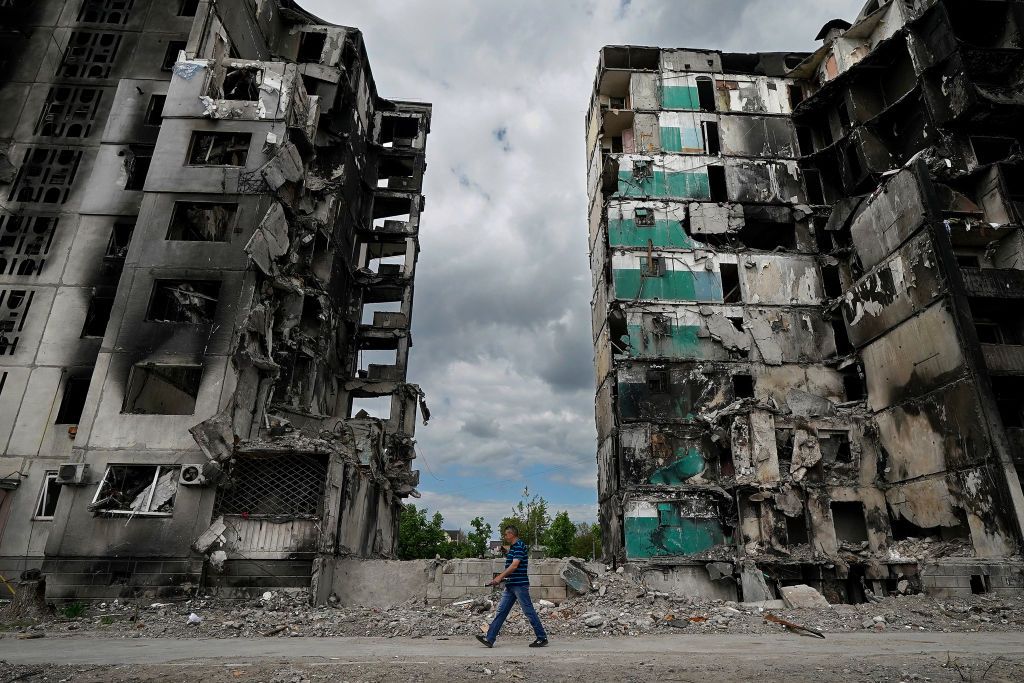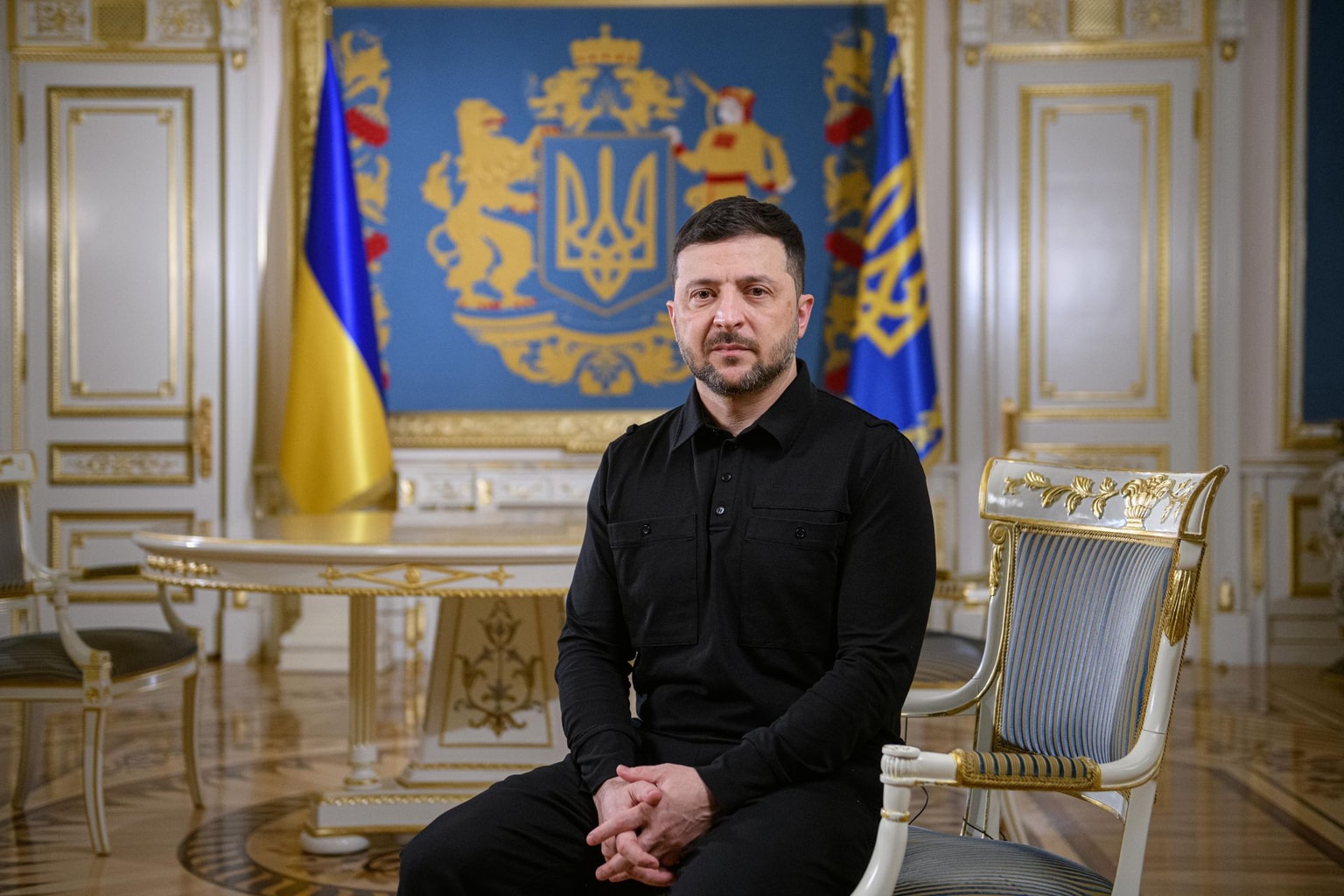
Opinion: Will the renewed US support for Ukraine be enough?
Soldiers from the Ukrainian military's 63rd Mechanized Brigade target Russian positions with artillery near Lyman, Donetsk Oblast, on April 13, 2024. (Wojciech Grzedzinski/Anadolu via Getty Images)

Ian Bremmer
Founder and President of Eurasia Group and GZERO Media
New U.S.-supplied weapons and money are now on their way to Ukraine. Whether to provide additional military aid was a matter of debate for many months in the U.S. Congress. In the end, Speaker of the House of Representatives Mike Johnson stared down the most right-wing elements of his party and put the matter to a vote.
The proposal passed by a margin of 311 to 112, thanks to the support of Democrats. While the same package also provides security aid for Israel and Taiwan, the nearly $61 billion for Ukraine is the biggest component – and will make the biggest near-term difference.
The new aid package will help Ukraine pay for Patriot air defense munitions, artillery shells, drones, counter-drone weapons, and missiles that can be fired from fighter planes. It is the first injection of cash that Congress has authorized since December 2022, and it is the single largest aid package that Kyiv will have received since the outbreak of the war.
Still, the U.S. has also been helping in other ways. Even before the latest aid package was approved, the Pentagon had quietly shipped a new long-range missile system to Ukraine, whose troops immediately put it to use against a Russian airfield in Crimea and Russian troops in Donbas.
Less talked about is a feature of the new package that both helps Ukraine and hurts Russia financially. Under the Rebuilding Economic Prosperity and Opportunity for Ukrainians (REPO) Act, the Biden administration is authorized to seize Russian state assets frozen in the U.S., and to use them to help Ukraine.
Before doing so, U.S. President Joe Biden wants to be sure that America’s European and other G7 allies are on board with the plan. If they agree, the move would furnish another $5 billion for Ukraine, with the funds drawn directly from Russian central bank assets. The European Union, meanwhile, is already reserving windfall profits generated from Russian central bank assets frozen in Europe; these proceeds could give Ukraine another 3 billion euros ($3.2 billion) per year.
Ukraine needed this help. Sixteen months of congressional inaction has left its exhausted forces short of the artillery and air defense ammunition needed to halt Russia’s recent advances along the front lines, as well as its drone and missile strikes on Ukrainian cities and critical infrastructure. This shortfall allowed Russian forces to grab more than 349.6 square kilometers (135 square miles) of Ukrainian territory over the past four months, including the strategically valuable city of Avdiivka in February.
Fears that Russia was preparing a major summer push for more Ukrainian land raised the specter – in Kyiv and in Washington, D.C. – that a big breakthrough could leave Ukraine on the verge of military defeat by the end of this year.
The latest surge of U.S. material support now makes that much less likely. If Ukraine can build new fortifications along the front line and secure the air defense systems it needs to protect its cities and energy infrastructure (despite a shortage of these supplies created by the war in the Middle East), it can stabilize its defensive positions through 2025.
But though America’s bid to close the ammunition gap between Ukraine and Russia can restore the on-the-ground stalemate established late last year, it won’t put Ukraine back on the offensive. That’s because Ukraine has another battlefield problem that its allies can do little to address: a shortage of soldiers.
Under a new law that Ukrainian President Volodymyr Zelensky signed reluctantly earlier this year, the age of military mobilization was lowered from 27 to 25, the number of exemptions from service were reduced, and soldiers can be ordered to serve for longer periods. All of that will help if the new troops can be effectively trained and quickly deployed. But the law won’t, by itself, change the game in Ukraine’s favor.
Moreover, this is likely the last package that Ukraine can expect from the U.S. until after the November presidential election. If Donald Trump wins, the Ukrainians could find themselves completely cut off from future help. And even if Biden wins, the American public’s willingness to provide future $61 billion aid packages will be limited. In the meantime, Russia has many more young men it can throw into the battlefield meat grinder.
The U.S. aid package thus provides a lifeline that can keep the Ukrainians in the fight through the end of 2024. That will give Ukraine’s friends in Europe more time to produce and deliver more weapons and ammunition, and it could deal Zelensky a stronger hand in future negotiations to end the war.
But it’s unlikely to help Ukraine avoid an eventual partition, one that cedes Russia some illegally taken land in exchange for the European future that most Ukrainians still want. After more than two years of brutal war, that is the painful reality Ukraine faces today.
Editor’s Note: Copyright, Project Syndicate. This article was published by Project Syndicate on May 7, 2024, and has been republished by the Kyiv Independent with permission. The opinions expressed in the op-ed section are those of the authors and do not purport to reflect the views of the Kyiv Independent.












